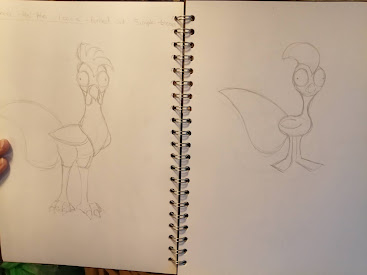Film review- Tremors
A B movie is defined as a low budget commercial film. The term originates from the golden age of Hollywood, and specifically the use of a ‘double-feature’ in cinemas. This is where cinemas sold two films for the price of one and was seen as good value for money in the times of the great depression. It would often be that the first film was the higher budget film with a larger amount of advertising and the second film was often the lower budget, less advertised film. With the creation of television and the usage of double features stopping, B movies quickly became films released straight to TV, only a few having cinema releases. The aim of a B movie is to make as much money on as little budget possible, and this is often reflected in the genres these films use.
One of the most popular genres for B movies to use was the monster genre. These are films or books that contain some kind of monster as a major part of the story, whether that’s something smaller like zombies or vampires, or something much larger like Godzilla or king Kong. Monsters were extremely popular for use in B movies, as they were often cheap to make as they didn’t require many complex special effects, didn’t have to have a range of locations for scenes, and could have quite a small cast. They also served to be popular with audiences, even to this day.
This leads us into ‘Tremors’, a monster horror film. It’s set in a rural desert town in Nevada, America in the small town of perfection, with a population of 14. Terror grips the little town when giant man-eating worms start picking off the town’s residents one by one. It’s up to the protagonists, Val McKee, Earl basset and Rhonda to rally the few residents still alive to get away from perfection and, in turn, kill of the man-eating worms. With a budget of just $10 million (pennies compared to the average budget of $25 to $53 million at the time) the film was very smart in many of the choices they made to make an enjoyable monster film on such a tight budget, from location to the monsters themselves.
Take the location of the film. By setting the film in the middle of a desolate valley in a desert, the film makers could save a bunch of money as they only have the one main location of the valley, and that one location doesn’t require mass amounts of set building, as the town of perfection only has 14 residents. This also really helps with building up the tension in the film, as the town eventually gets completely cut off from the outside world, so the few people that are left in the town at that point are completely on their own and must either make it to the mountains (the worms can’t burrow through solid rock) or succumb to the worms. You get a real sense of isolation when watching the film, which mainly comes from the remote location. Having such a small town in terms of population size also helps save money – the less actors you have act in the film, the less you have to pay in wages. You’re also able to relate more to a small cast, as you get to know each of the characters more intimately than in a larger cast. Finally, we get onto the monsters of the film, the man-eating worms. Although the worms can be a bit unbelievable at points and look very puppet like, the film makers did make some smart decisions regarding the worms and making them convincing as threats. By having the monsters be worms, the film makers saved on articulation, as a monster with arms would have required more work to make them seem alive. Having the worms be underground was also a smart choice, as this meant the puppets for the worms didn’t actually have to be used all that often in the film, as you could imply they were there by camera techniques and sound. This also made the worms more of a threat, as being able to burrow made them much harder to detect, and much harder to kill. The use of a worm as the monster was smart in turns of storytelling as well, as they come off as very unsettling and alien like, and unsympathetic. You don’t feel sorry for the worms when they get picked off, as you would if they were based on other burrowing creatures, like moles for example.
In conclusion, Tremors is successful as a low budget monster film because the budget saving choices the film makers made in terms of location, cast size, and props made sense with the storyline, and didn’t feel like they were made just to save on money. The choices of having the location be remote and the cast be small added to the feeling of isolation and built up tension, along with making the audience want to see the cast succeed as we got to know the characters more intimately.
Works Cited
Dirks, T., n.d. Filmsite.
[Online]
Available at: https://www.filmsite.org/90sintro.html
Malatesta, M., n.d. Book-genres. [Online]
Available at: https://www.filmsite.org/90sintro.html
Unknown, n.d. Wikipedia. [Online]
Available at: https://en.wikipedia.org/wiki/B_movie
Unknown, n.d. Wikipedia. [Online]
Available at: https://en.wikipedia.org/wiki/Tremors_(1990_film)



Comments
Post a Comment